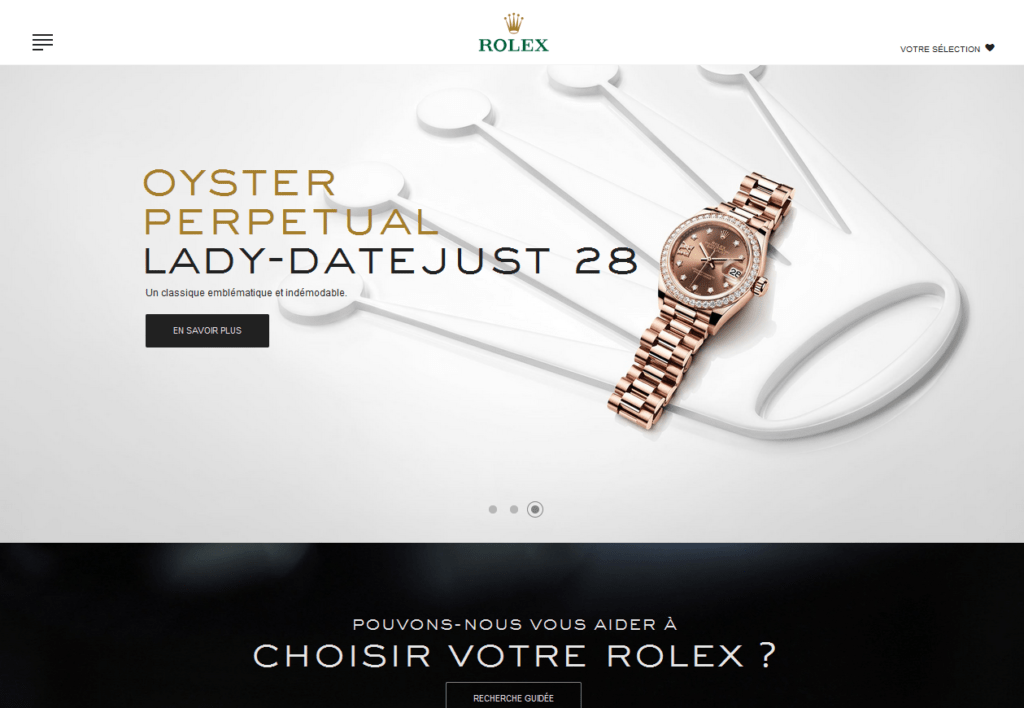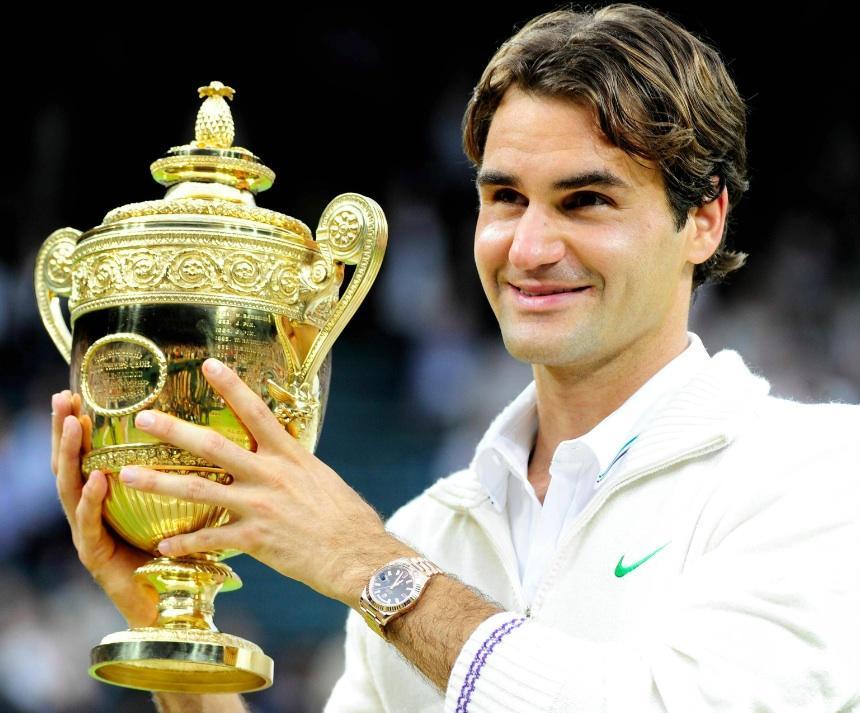Overview
And yet, digital habits have shifted — profoundly. Consumers research online before purchasing, trust is built through online reputation, and the ROPO effect (Research Online, Purchase Offline) has become a standard, even for ultra-premium products. The internet is now the first source of inspiration and information, even in the world of luxury timepieces.
Rolex, the iconic Swiss watchmaker known for its timeless craftsmanship and unrivaled precision, understood early on that the challenge wasn’t just to be online — it was to do so without losing its soul.
Because the stakes are twofold:
How do you preserve the aura of an exclusive, prestigious brand in a digital environment that is accessible 24/7 — and to everyone?
And just as crucially: How do you recreate a powerful, memorable customer experience without a physical boutique, without velvet counters, without the soft-spoken ritual of haute horlogerie?
In this case study, we delve into Rolex’s digital strategy — the brand’s bold choices, its deliberate silences, and the way it has transformed digital into a natural extension of its DNA, without ever compromising on its values.
2. A Legendary Brand Facing the Challenge of Digital
For years, the luxury industry maintained a cautious — even distrustful — relationship with the digital world. And understandably so: the very foundations of prestige are rooted in codes that run counter to those of the internet — discretion versus visibility, slowness versus immediacy, rarity versus accessibility.
Rolex, the globally revered Swiss watchmaker, didn’t rush into digital transformation. Unlike some competitors who jumped online simply to “keep up,” Rolex chose to observe first, analyze carefully, and act only when the time was right.
Because if going digital was inevitable, doing so in a way that compromised the brand’s timeless identity was simply out of the question. Everything Rolex stands for — excellence, elegance, durability — had to remain intact.
Meanwhile, customer behaviors were evolving rapidly:
- Even high-net-worth consumers began researching online before stepping into a boutique.
- ROPO (Research Online, Purchase Offline) became a default behavior.
- A new generation of luxury buyers emerged, craving more transparency, digital fluency, and brand accessibility — on their own terms.
Rolex didn’t panic. The brand understood that success wouldn’t lie in selling online at all costs, but in being present — meaningfully — along its audiences’ digital journeys. Not in digitizing luxury, but in making digital… luxurious.
That’s where Rolex has truly excelled: mastering the codes of a new era without betraying the old.
3. A Powerful Yet Minimalist Content Strategy
At Rolex, content isn’t about conversion. It’s about embodiment.
No blog. No overly elaborate storytelling. No lifestyle articles packed with advice. And yet, the brand delivers a content experience of remarkable depth — built around a single guiding principle: celebrating time, honoring precision, and elevating legacy.
Every page, every word, every image on Rolex’s website serves a greater narrative — one that goes far beyond the watch itself:
- The story of a record-breaking ascent or deep-sea expedition.
- A tribute to an ambassador whose life embodies excellence.
- A homage to the heritage of Swiss horology.
Rolex masters the art of silent editorialization:
- Texts are sparse but sculpted.
- Visuals dominate and speak volumes.
- The rhythm is calm, intentional — far from the frantic pace of most brands' content calendars.
The result? A content strategy that:
- Fuels aspiration and wonder.
- Strengthens historical legitimacy.
- Turns each digital interaction into an act of belief — a reaffirmation of the brand’s mystique.
Even on YouTube, where Rolex occasionally releases high-quality videos tied to events, ambassadors or product launches, the tone remains consistent: refined, understated, perfectly executed.
It’s a content approach that runs against the grain of typical digital marketing strategies — and works precisely because it stays so loyal to the brand’s DNA.

Rolex case study
Rolex doesn’t flood social media. It curates a presence.
Across Instagram, Facebook, YouTube, and LinkedIn, the brand doesn’t chase trends or react to current events. No impulsive Stories, no livestreams, no click-driven content. Rolex posts at its own pace, on its own terms — with total control over how its image is presented.
Each post is a carefully placed piece in the Rolex visual mosaic:
- A refined, high-resolution image — often focused on the watch or an eternal, almost cinematic ambiance.
- A short caption — evocative, cryptic, often poetic.
- Zero sales pitch. No "Shop Now" buttons. Just presence.
This approach offers several advantages:
- It preserves the brand’s aura of exclusivity.
- It reinforces a visually coherent, instantly recognizable editorial identity.
- It avoids dilution through overexposure or social noise.
And yet, the results speak for themselves: Millions of Instagram followers. High engagement per post. A loyal, global community. All of this, without playing to the algorithm or crowding users’ feeds.
While other brands chase visibility, Rolex cultivates consistency — and that’s exactly what makes it so magnetic:
- No shouting.
- No gimmicks.
- Just a calm, poised presence — rare, refined, unmistakable.
Even on social media, Rolex remains Rolex:
A brand that doesn’t run after time — it defines it.
5. Influence & Sponsorship: The Art of Ultra-Selective Partnerships
Rolex never chooses its collaborations lightly. Every strategic partnership is meticulously curated to uphold and enhance the brand’s long-term image — with a relentless focus on relevance, prestige, and authenticity. Whether it’s aligning with iconic figures or supporting elite events, Rolex favors quality over quantity: a select few, deeply aligned alliances rather than dozens of fleeting campaigns.
This philosophy of ultra-selectivity has elevated sponsorship into a refined art form — one that reinforces a brand narrative built to last.
Timeless Icons, Timeless Values
Rolex’s longstanding partnerships tell their own story.
In tennis, the brand’s bond with Roger Federer — established in 2001 — is the embodiment of timeless excellence. The Swiss champion, known for his grace, precision, and humility, has long mirrored the brand’s core values. For over two decades, Federer has not just worn Rolex — he has personified it.
In a completely different field, James Cameron — visionary filmmaker and deep-sea explorer — also reflects Rolex’s brand spirit. As a Rolex Testimonee, Cameron has enjoyed the brand’s support for his scientific missions. In 2012, during his record-setting solo dive into the Mariana Trench, he brought with him an experimental Rolex prototype. It emerged unscathed — and would later inspire a production model.
More than a marketing stunt, this partnership showed Rolex’s commitment to those who push human and technological limits.
The takeaway? Backing your ambassadors’ passions creates authentic stories — and real emotional connection with the public.

Roger Federer - Rolex
New Ambassadors, New Dimensions
This strategic selectivity continues with recent partnerships.
In 2025, Leonardo DiCaprio joined Rolex’s circle of ambassadors. The Oscar-winning actor, known as much for his activism as his artistry, brings a new layer to Rolex’s brand narrative: conscious elegance. By aligning with DiCaprio, Rolex signals its growing commitment to environmental stewardship — without compromising its prestige.
In motorsport, Rolex has long been a symbol of endurance and precision. In 2025, the brand deepened its legacy by becoming the Official Timepiece of the IMSA Championship in North America. The yearly presentation of the Rolex Cosmograph Daytona to the winners of the Rolex 24 at DAYTONA has become one of the most coveted rituals in auto racing — blending performance, tradition, and timeless design.
In sailing, Rolex demonstrates the same unwavering vision. Since 2018, it has served as the global presenting partner of the SailGP Championship, extending its sponsorship for another ten seasons through 2034. With its cutting-edge catamarans, sustainability goals, and innovative format, SailGP is the perfect match: forward-thinking, elite, and purpose-driven. Rolex doesn’t just lend its name — it lends its philosophy.
A Partnership Strategy Built to Last
Whether through iconic personalities — athletes, explorers, artists — or world-class events, Rolex has transformed partnership into a strategic pillar of brand storytelling. Every alliance reinforces a powerful narrative: excellence, durability, and mastery.
- While others follow trends, Rolex builds loyalty.
- Where others seek exposure, Rolex seeks alignment.
And in doing so, the brand achieves something rare: cultural permanence.
Rolex doesn’t ride the moment. It engraves its name into time itself.
6. A Digitally Transformed Brand That Hasn’t Lost Its Soul
Luxury is often seen as the last frontier of exclusivity — a universe where scarcity, ritual, and mystery reign supreme. Yet even in this sacred space, digital transformation has proven inevitable. The challenge? Embrace technology without betraying the brand’s DNA.
Rolex has achieved this balancing act with striking precision.
Unlike some heritage brands that rushed headfirst into digital for fear of being left behind, Rolex took its time. It didn’t chase trends. It curated an evolution — one grounded in restraint, clarity, and fidelity to its core values.
A Website That Feels Like a Boutique
The Rolex website isn’t just a product catalog — it’s an immersive experience.
Every element, from the layout to the typography to the animations, has been meticulously designed to reflect the elegance of a flagship boutique. The visuals are stunning, the navigation smooth, the user journey intuitive.
But above all, the site tells a story. It guides the user with the same care and intention you’d find in a luxury retail setting. Nothing is rushed. Nothing is pushy. Every click feels deliberate — part of a larger ceremony. Even the UX (user experience) becomes a digital translation of the horological ritual.
Content Strategy: Where Precision Meets Restraint
This philosophy extends seamlessly to Rolex’s digital content strategy :
- Social media channels are finely tuned, not overplayed.
- Instagram posts are artfully composed — every image a still-life of craftsmanship.
- Captions are concise and poetic, not cluttered with hashtags or call-to-actions.
Rolex doesn’t aim to dominate your feed. It seeks to elevate your expectations.
No clickbait. No noise. Just timeless relevance at every digital touchpoint.
The Bigger Picture
This digital discretion is not a limitation — it’s a deliberate choice. While many brands aim for visibility, Rolex aims for impact. While others pursue reach, Rolex pursues resonance.
Its digital presence isn’t about occupying space. It’s about enhancing desire — through silence as much as through speech. In a world saturated with content and noise, Rolex’s digital strategy is a masterclass in minimalism — and in mastering attention by not demanding it. Rolex didn’t just go digital. It redefined what digital luxury could look like.
Subscribe to our newsletter and gain access to strategic insights, exclusive analyses, and expert tips to enhance your online presence.
A Silent but Sharp Data Strategy: Precision Behind the Scenes
At Rolex, nothing is left to chance — and data is no exception.
The brand doesn’t flaunt its dashboards or talk about algorithms. But behind the scenes, a refined analytical mindset guides many of its decisions. Rolex doesn’t rely on mass data collection or automated campaigns. Instead, data is treated like fine watchmaking — with attention to detail and a focus on precision.
Data at Rolex serves to:
- Subtly understand the unique expectations of each market,
- Measure the long-term impact of its sponsorships and partnerships,
- Align its brand storytelling with evolving cycles of desirability,
- Maintain editorial consistency across all touchpoints, down to the last detail.
In a world overflowing with signals and noise, data at Rolex acts as a quiet compass. It doesn’t steer the brand with brute force — it calibrates, gently and purposefully.
This rare stance allows Rolex to remain true to its myth while staying attuned to the subtle shifts of modern culture.
At Rolex, data analytics strategy is not noise. It’s a heartbeat. Steady. Discreet. Precise.
Conclusion
Rolex has never raced against time. It has always mastered it.
In the luxury world, where the temptation to dazzle often overshadows depth, Rolex sets its own pace — one of consistency, coherence, and quiet excellence.
Rather than surrendering to the frenzy of digital transformation, Rolex embraced it with purpose and elegance, never compromising the essence that built its legend: refined storytelling, uncompromising quality, and timeless vision.
From the immersive design of its website to the precision of its content, from its iconic partnerships to its understated social presence, every digital choice Rolex makes is intentional, aligned, and strategic.
The result? A brand more relevant than ever — without giving up an ounce of its identity.
Rolex doesn’t follow the digital world. It shapes its own path through it.
And in doing so, it shows the way for all luxury brands seeking to thrive in a digital age without losing their soul.
In a world of fleeting trends, Rolex remains timeless — and that’s what makes it truly desirable.
Let's define your goals together
FAQ
What digital marketing lessons can luxury brands learn from Rolex?
Rolex teaches us that digital presence doesn’t have to mean overexposure. One of the most powerful lessons lies in the brand’s ability to remain selective, intentional, and fully aligned with its heritage — even online. Rather than flooding social platforms or adopting every digital trend, Rolex focuses on consistency, elegance, and strategic silence. Luxury brands can learn to prioritize quality over quantity, embrace minimalism in storytelling, and use digital channels to reinforce, not reinvent, their brand DNA.
How does Rolex use partnerships and influencers in their digital approach?
Rolex applies an ultra-selective approach to partnerships and influencer marketing. It doesn't rely on fleeting influencer campaigns or large-scale endorsements. Instead, it builds long-term relationships with individuals who naturally embody the brand’s values — from Roger Federer to Leonardo DiCaprio. These alliances are not just for visibility; they are strategic pillars in Rolex’s brand storytelling. Each ambassador becomes part of a carefully curated narrative that supports Rolex’s advertising strategy across both digital and traditional media.
Why is it important for you to understand Rolex’s marketing strategy?
Understanding the Rolex marketing strategy offers rare insight into how a brand can remain aspirational in a world of instant gratification. Rolex shows that exclusivity, consistency, and patience can still thrive in the digital age. For marketers, it’s a masterclass in resisting short-term tactics and building long-term value. By studying how Rolex balances tradition and innovation, you gain a clearer vision of how to position a brand in a saturated digital landscape — with meaning, precision, and impact.
What marketing strategy does Rolex use?
Rolex uses a timeless, multi-layered marketing strategy rooted in prestige, consistency, and cultural relevance. Rather than focusing on aggressive digital campaigns, the brand embraces subtlety — leveraging curated content, highly selective partnerships, and a visual identity that reinforces its elite status. Its approach is less about mass marketing and more about shaping perception through excellence. This is what defines the Rolex marketing strategy: a commitment to control, craftsmanship, and credibility across every touchpoint.









4. Social Media: Selective, Aesthetic, and Consistent